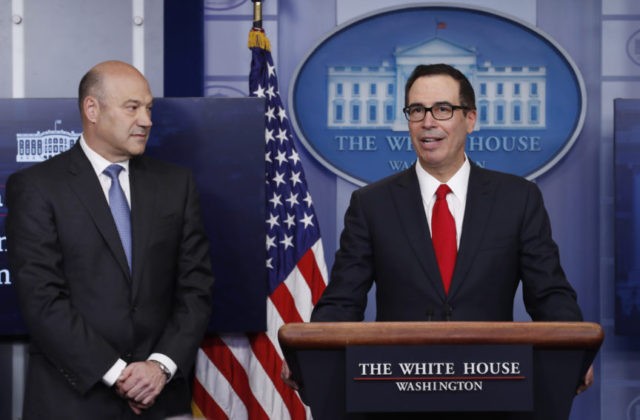President Donald Trump on Wednesday proposed deep changes to federal taxes, including sharp cuts in both individual and business taxes and the elimination of the estate tax.
The proposal reduces the number of individual income tax brackets to three–10 percent, 25 percent, and 35 percent. It would double the standard deduction, effectively eliminating federal income taxes on the first $24,000 of a couple’s income. It also calls for the elimination of the estate tax and the alternative minimum tax. The White House also said that families would receive a break for child care expenses.
As a result of these changes, the tax burden on most Americans would be reduced under the plan.
The Trump administration would eliminate most itemized tax deductions except for the deductions for mortgage interest and charitable donations. Notably, taxpayers would not be able to deduct state and local taxes, which hurts residents of high-tax states such as New York and California. Lower tax rates, however, make these deductions less valuable.
The corporate tax rate would fall to 15 percent from 35 percent. In addition, U.S. companies would owe little or no tax on future profits earned outside the U.S., putting the U.S. on a territorial tax system similar to those employed in most developed countries. Business income reported on individual returns would also drop to 15 percent, a change that would benefit many small businesses.
Treasury Secretary Steven Mnuchin and White House economics adviser Gary Cohn set forth the framework at a White House press conference on Wednesday. The proposals bear a strong resemblance to those set forth by the Trump campaign last year.
Many details will still have to be worked out and negotiated with Congress. The proposal did not go into specifics about the child care credit, for example. Nor did it spell out how stockpiled foreign earnings of U.S. companies would be treated if repatriated.

COMMENTS
Please let us know if you're having issues with commenting.